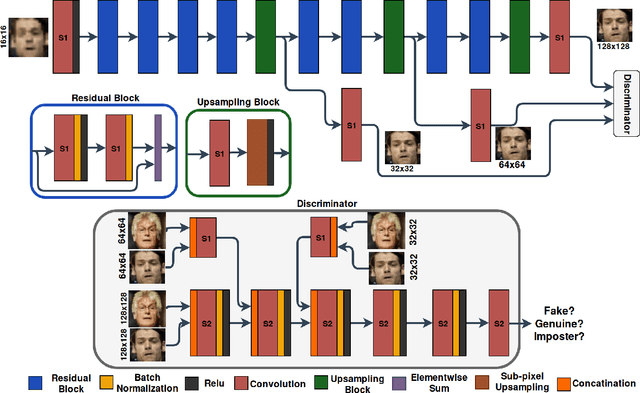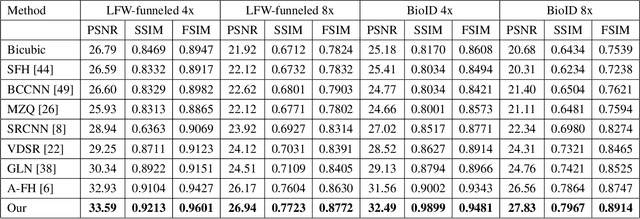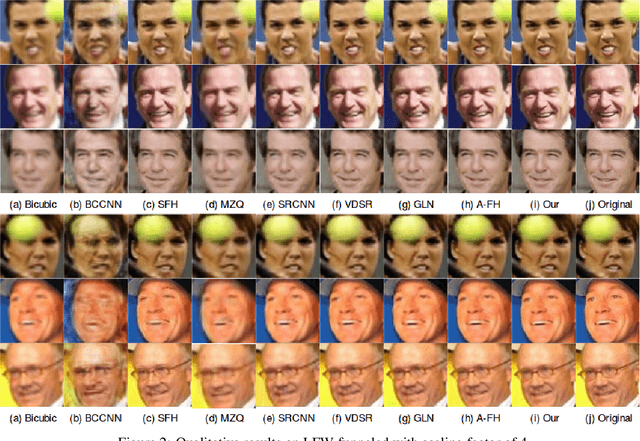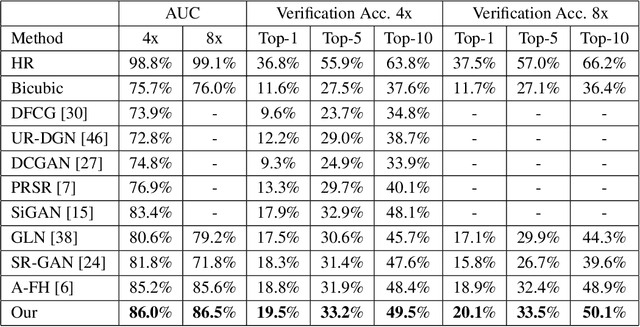Identity-Aware Deep Face Hallucination via Adversarial Face Verification
Paper and Code
Sep 17, 2019



In this paper, we address the problem of face hallucination by proposing a novel multi-scale generative adversarial network (GAN) architecture optimized for face verification. First, we propose a multi-scale generator architecture for face hallucination with a high up-scaling ratio factor, which has multiple intermediate outputs at different resolutions. The intermediate outputs have the growing goal of synthesizing small to large images. Second, we incorporate a face verifier with the original GAN discriminator and propose a novel discriminator which learns to discriminate different identities while distinguishing fake generated HR face images from their ground truth images. In particular, the learned generator cares for not only the visual quality of hallucinated face images but also preserving the discriminative features in the hallucination process. In addition, to capture perceptually relevant differences we employ a perceptual similarity loss, instead of similarity in pixel space. We perform a quantitative and qualitative evaluation of our framework on the LFW and CelebA datasets. The experimental results show the advantages of our proposed method against the state-of-the-art methods on the 8x downsampled testing dataset.
 Add to Chrome
Add to Chrome Add to Firefox
Add to Firefox Add to Edge
Add to Edge